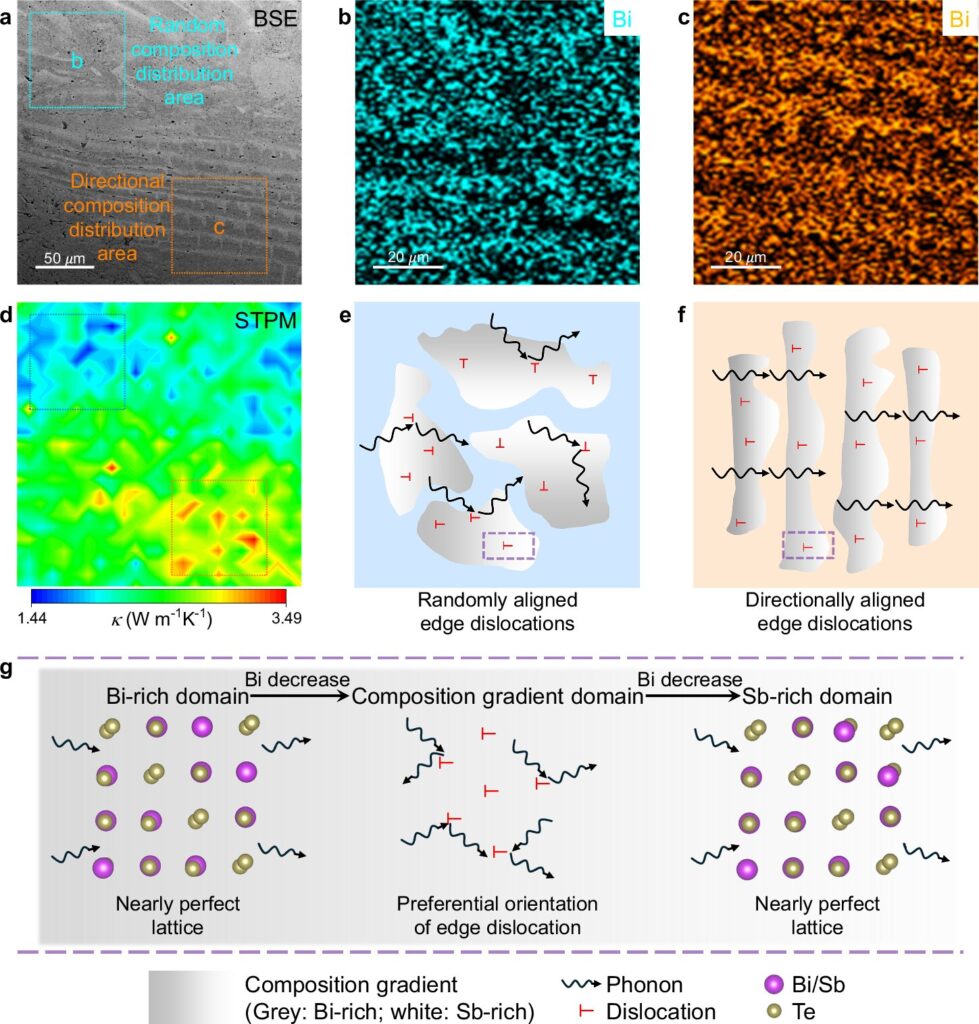QUT researchers have identified why some materials can block heat more effectively, which is a key feature for energy conversion, insulation and gas storage.
The research, published in Nature Communications, discovered a structural mechanism that explains why some materials with uneven composition exhibit exceptionally low thermal conductivity. This is a property vital for the conversion of heat into electrical energy.
The first author, Siqi Liu, said the findings challenged conventional models that overlook the role of microstructural features.
“People used to think low thermal conductivity in uneven materials was just due to how the different parts were mixed,” Liu said. “But we found it’s actually caused by tiny defects, called edge dislocations, that scatter heat more when they’re randomly arranged.”
The researchers in the study looked at a commonly used thermoelectric alloy (Bi₀.₄Sb₁.₆Te₃) as a model system.
The researchers used advanced electron microscopy and scanning thermal probe techniques to map the bismuth-antimony-telluride compound’s composition and thermal properties at the atomic level.
Liu said the research found that materials with more randomly mixed bismuth- and antimony-rich zones blocked heat more effectively than those with a more ordered structure.
This was due to defects, called edge dislocations, being scattered in all directions, which disrupt heat flow, Liu said.
Team leader Professor Zhi-Gang Chen said the areas the discovery opens new avenues for designing materials with tailored thermal properties.
“By understanding how these dislocations form and align, we can better engineer materials for energy applications,” Professor Chen said. “This structural insight provides a new design principle for low thermal conductivity materials beyond traditional defect engineering.”
Liu said the findings could have broad implications across industries.
“Whether it’s improving the efficiency of thermoelectric generators or developing better thermal insulators, this work gives us a new tool to control heat flow at the atomic level,” Dr. Liu said.
The full QUT research team, all affiliated with the QUT Center for Material Science, was: Siqi Liu, Dr. Wei-Di Liu, Dr. Wanyu Lyu, Yicheng Yue, Dr. Han Gao, Dr. Meng Li, Dr. Xiao-Lei Shi, and Professor Zhi-Gang Chen with the QUT School of Chemistry and Physics and the ARC Research Hub in Zero-emission Power Generation for Carbon Neutrality. James D. Riches is based at QUT’s Central Analytical Research Facility (CARF). Distinguished Professor Dmitri Golberg is affiliated with the QUT School of Chemistry and Physics.
More information:
Siqi Liu et al, Alignment of edge dislocations—the reason lying behind composition inhomogeneity induced low thermal conductivity, Nature Communications (2025). DOI: 10.1038/s41467-025-64749-5
Citation:
Randomly aligned defects explain low thermal conductivity in some materials (2025, November 14)
retrieved 15 November 2025
from https://techxplore.com/news/2025-11-randomly-aligned-defects-thermal-materials.html
This document is subject to copyright. Apart from any fair dealing for the purpose of private study or research, no
part may be reproduced without the written permission. The content is provided for information purposes only.

